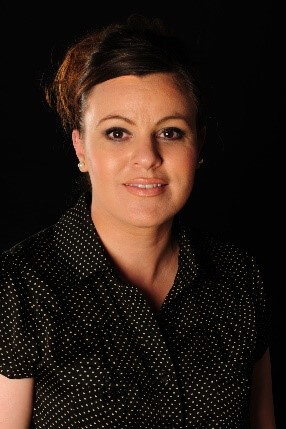

The critical requirement to be able to project the number of staff required to build a sustainable workforce to meet the planned and future needs of the population who accessed HSE provided and funded services was highlighted by Dr Philippa Ryan Withero, Assistant National Director in HR with responsibility for Strategic Workforce Planning and Intelligence and her colleague Liz Roche who leads strategic workforce planning in her team at a HMI Seminar.
They said the Irish public health service was one of the largest employers in Ireland with a workforce in March 2024 of over 148,000 whole-time equivalent staff (nearly 167,000 people) employed to deliver care and services across the country.
They said their work was underpinned by the “Strategic Framework for Health and Social Care Workforce Planning” (DoH 2018) which gave effect to a national approach to Strategic Workforce Planning and the HSE’s People Strategy 2019-2024 (Priority Action 4) which set out the key priorities to support the implementation of this Framework, alongside core objectives to give effect to strategic workforce planning and intelligence developments across the health system.
They told the seminar that in early 2021 they began engagement in a collaborative research project with the ESRI, to develop, test, and validate a healthcare workforce projection model for Ireland through the expansion of the ESRI Hippocrates model in order to provide national and regional projections of healthcare workforce requirements over the medium-term. The programme of work followed the model used by the ESRI in a range of research areas, where experienced researchers undertook research of the highest academic quality and in this instance partnered with staff with significant experience in healthcare workforce planning in the HSE.
Liz reported that phase 1 of this programme of research with the ESRI was to project workforce requirements for the following professions in the public sector acute hospital system up to 2035 – Medical, Nursing & Midwifery, Health and Social Care Professions, Dietitians, Occupational Therapists, Physiotherapists, Speech and Language Therapists and Social workers and Health Care assistants/health and social care assistants.
She highlighted that projections were provided both for hospital groups and health regions. A range of alternative projections were presented which reflected varying scenarios in relation to population growth, trends in health and life expectancy, waiting list management, enhanced community care delivery, and changing the mix of workforce involved in care delivery.
She reported that overall, the findings demonstrated that:
- The population was projected to increase to 5.8 million by 2035 under the ESRI’s Central population growth scenario, an increase of nearly 500,000. The number aged 85 years and older was also projected to more than double.
- Driven by projected demographic change, particularly an ageing of the population, workforce requirements for all staff categories examined were projected to increase substantially by 2035. The largest increases in workforce were projected for health and social care professionals who were required by older people in hospital.
- The largest projected increases in workforce requirements were recorded for regions located in the east of the country.
She said that the report was published in July 2022 and is available via https://www.esri.ie/publications/projections-of-workforce-requirements-for-public-acute-hospitals-in-ireland-2019-2035a
Liz also reported that Phase 2 of this research commenced in 2023 to examine the workforce requirements for a number of professions in each of the care groups in the community. She highlighted that the scope (services and staff cadres) to be included for primary care services, older persons services, mental health services and disability services had been discussed and agreed with the national leads in Community Operations and Community Strategy teams in the HSE and agreement reached to commence with projections for Primary Care.
She presented the model developed for acute hospitals highlighting that it required granular level data on patients who accessed hospital services which was obtained from the HIPE via the HSE Health Pricing Office, data on their age, sex, diagnosis, length of stay, complexity of journey through the hospital, county of origin etc. and noted that in the current absence of a patient administration system in community a bespoke approach was required for each of the care groups.
Liz provided an overview of the methods being used for the primary care analysis and an update on the activity data with an associated age profile that was provided by the HSE Business Intelligence Unit, Primary Care, noting how the ESRI generated service user profiles using these data, including how supplementary utilisation data from sources such as the TILDA study in Trinity College Dublin had been incorporated.
She highlighted that these preliminary service user profiles would be explored and finalised over the following couple of months, saying that it was planned to organise focus groups with representatives of each of the professions and their respective national offices (Office of the Health and Social Care Professionals and the Office of the Nursing and Midwifery Services Director).
She explained that in addition, workforce data was extracted from the SAP system and was being validated with relevant staff in each Community Healthcare Organisation at present. This data would be supplemented with data on agency use and overtime undertaken for the same period.
Liz also confirmed that the data requirements and methods for the older persons services and mental health components of the research were being developed at present and it was anticipated to undertake both care groups in parallel. Workforce projections for Disability services would be the final care group to commence – given the additional complexity of the model of service delivery across these services.
She said the timeline for the completion of this phase of the research would be mid 2025 – with projections for some care groups being available in 2024.
Finally, Philippa outlined the implications of the research. She said, “Overall, findings from this research will raise important considerations for policymakers in terms of workforce investment across the Health Regions, the need for workforce planning and training both nationally and regionally over the coming years and in the context of the implementation of Sláintecare reforms”.

